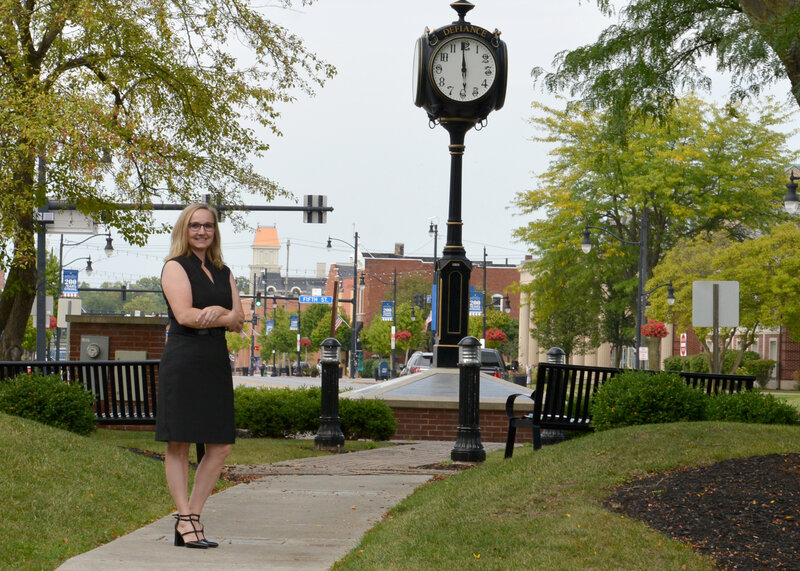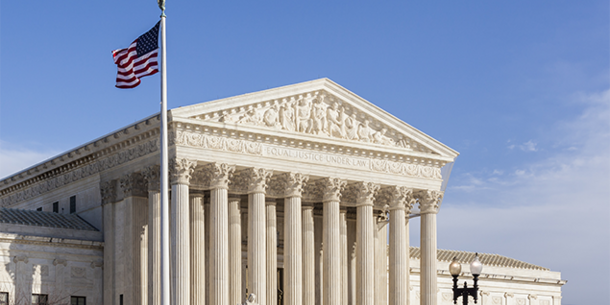For voters, the start of an election is usually marked by the doors opening for early voting in October, when a mail ballot arrives, or heading to the polls on Election Day. But for election officials across the country, it begins many months before a ballot is ever cast.
For nearly a year before the election, these officials diligently work to purchase supplies, test and deploy voting equipment, and implement safeguards and redundancies to ensure each election is secure, accurate, and accessible for all eligible voters.
But since 2020, election officials have found themselves the target of unprecedented vitriol and intimidation, leading to increased turnover and the loss of institutional expertise. In the Brennan Center’s most recent annual survey, more than 1 in 3 election officials report experiencing threats, harassment, or abuse.
Ahead of this year’s elections when voters in several states head to the polls for local and state races, the Brennan Center spoke with Tonya Wichman, the elections director in Defiance County, Ohio. Wichman has served as an election official for over a decade in the small county with a population of just under 40,000. In Ohio, early in-person voting began on October 7 for school board and municipal government races as well as local ballot measures.
Wichman discussed preparing for this year’s elections, her experience, and what her message is to voters and election officials across the country in this new threat environment.
Kendall Verhovek: In Ohio, each of the 88 counties has a bipartisan board of elections comprised of four members. You serve as the elections director in Defiance County. What do you do in that role?
Tonya Wichman: We’re a smaller county so we only have two full-time people on staff that work alongside part-time clerks. Our role here is a little bit different than a large county that has departments for everything. But like every other county, we work in bipartisan teams. We can’t even open doors in Ohio without a member of the opposite party.
The two of us personally run every aspect of an election. That includes voter registration, programming the ballot and the poll books, working through the new security implementations, setting up polling locations, and more.
Throughout the year, we do list maintenance to remove people who pass away. We also process petitions for anyone that wants to be on the ballot, verify signatures for candidate petitions, and go through the legal details with the prosecutor’s office to make sure everything lines up with the state’s election code. We also take continuing education programs to make sure we learn how to make things more efficient and better for our voters.
So when people ask, “Do you just work two days a year?” the answer is, “No, we spend the entire year getting ready for the next election.” Even right now, we’re working on next year’s May primary — and we started back in July.
Verhovek: How long have you been preparing for this year’s elections?
Wichman: We started for this year’s elections in December of last year for the primary. For every election, we do a run-through. We program the ballots, scan them, and test every single voting machine and every ballot.
For the general election, we are printing ballots, backup ballots, and provisional ballots in case they are needed. We are contacting all of our polling locations, scheduling time for our delivery crews for voting machines, mapping out the layout of polling locations for the delivery crews, and creating a chain of custody documenting every post-testing seal placed on each piece of equipment before it leaves our office. We’re also working with our vote location managers so they are comfortable handling questions that might come up throughout this election.
The early voting period started earlier this month and it adds hours to our day. People come through starting at 8 a.m. to vote. We are also training poll workers — a lot of them have done it for years, but we make sure they have a refresher so that they know if anything has changed since they were last a poll worker.
Verhovek: How does preparing for this year’s elections differ from either a midterm or presidential election?
Wichman: There’s the same amount of work for every election, whether it’s a 72 percent turnout like in last year’s presidential election or 20 percent. We do everything the same. We treat every election as important as the last one.
Verhovek: How do you keep the community involved in elections in the off-season?
Wichman: A few weeks ago, our team counted the votes for our local Rib Fest. We wanted to have a public presence and show people a real election. We want the community to see us as people who live here. We’re your friends and neighbors. There is a lot in the media and on social media about how elections are run, but we’re the people you go to church with, the people you’re at games with.
Verhovek: Why did you become an election official?
Wichman: I’m not sure anyone grows up in life and says, “I’m going to be an election official.” My dad always worked at polling locations seasonally and I applied when I was in a transition point in my life. I’ve never liked politics, but elections are more than politics. It’s about making sure everyone’s voice is heard.
I think once you start in elections, you either love it or you hate it. And sometimes you love and hate it at the same time. But once you get sucked in, you want to make sure it’s right, and you will put everything you have into it to make sure it’s done correctly.
But don’t get me wrong, I’ve thought about leaving.
Verhovek: Why did you stay? What would you like other election officials to know?
Wichman: In 2022, I was just about as broken as I could be in this job. A local person would even follow me out of my nephew’s ballgames because they disagreed with how I did things.
One weekend, I went to my mom and dad’s, and I sat in their living room and I cried. I said, “I can’t do this anymore. I just don’t have it in me anymore.” And my mom looked at me, and she goes, “Well, if you don’t do it, then who? You put everything you have into it, and that’s what we need to make sure our elections keep running this way.” And she was right.
The following year, I actually had the opportunity to go to Sierra Leone in Africa to observe their elections through the Carter Center. There were people with machine guns standing on top of buildings because of security concerns, and still, people lined up to vote because they were so excited for that opportunity. And I think it was just the refresher that I needed — if I don’t fight for this to be done correctly, what if they put the wrong person in?
Verhovek: What is your message to voters?
Wichman: I would really like them to know that our whole team here puts everything we have into a job that expects perfection. We spend weeks and multiple days of testing and reviewing and proofing everything to remedy any errors because we expect the best from ourselves for our voters. We want to make sure that our elections are accessible. We want to make sure they’re fair. And we count every single vote. We want them to know that one vote can make the difference.
And if they are concerned about the process, if they see a post on social media, or they read an article, or they watch a video, I encourage anyone to go into their board of elections and ask them about it. Ask them to clarify that specific thing you’re concerned about because there is an explanation.
And every time you go out to vote, please thank your poll workers. They are there from 5:30 in the morning until 8:30 at night, they’re tired, and they put up with a lot throughout the day. So just a simple thank you to them is really important to me. We wouldn’t have elections without them.
This interview has been edited for length and clarity.




